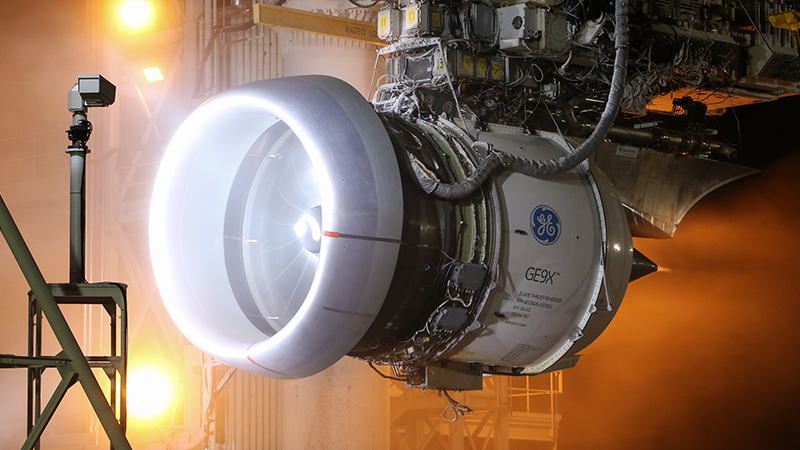Stay Up to Date
Submit your email address to receive the latest industry and Aerospace America news.
The Gas Turbine Engines Technical Committee works to advance the science and technology of aircraft gas turbine engines and engine components.
Certification of many new engines in 2017 showed that gas turbine engine technology is advancing at a rapid pace.
Michigan-based Williams International announced in May that its FJ44-4A-QPM engine was selected by Swiss aircraft manufacturer Pilatus for its PC-24 business jet. The FAA and European Aviation Safety Agency certified the engine, which led to the announcement. Williams included many new technologies, including a quiet power mode that provides efficient ground power and eliminates the traditional auxiliary power unit.
One Aviation Corp., headquartered in New Mexico, announced in June that the Williams FJ33-5A-12 turbofan engine will power the new EA700 “Project Canada,” an improved version of the Eclipse 500/550 aircraft. The FJ33-5A-12 will allow the EA700 to exceed performance goals, with a maximum range in excess of 2,700 kilometers and the ability to climb direct to its maximum altitude even on hot days.
Rolls-Royce, based in the Britain, marked a milestone for the Trent 1000 TEN engine in March, powering the first test flight of the Boeing 787-10 Dreamliner aircraft. The Trent 1000 TEN will contribute to the Dreamliner halving the noise footprint of previous-generation aircraft. EASA granted full flight certification in August while Rolls-Royce delivered the first passenger engines to Boeing in Washington.
Rolls-Royce started power runs of the world’s most powerful aerospace gearbox in May in Germany. The gearbox enables larger fan sizes and reduces weight. Rolls-Royce achieved a record-setting 70,000 horsepower and plans to reach 100,000 horsepower — the equivalent of more than 100 Formula 1 cars.
GE began certification testing of its GE9X engine at the Peebles Test Operation in Ohio in May. The GE9X will power Boeing’s new 777X aircraft. To prepare for the certification program, GE commenced trials in March 2016 and concluded this year with icing tests. GE has slated the GE9X for installation and flight tests aboard GE’s 747-400 Flying Test Bed in California.
Mitsubishi Heavy Industries, Mitsubishi Aircraft and Pratt & Whitney announced in May that Pratt’s PW1200G geared turbofan engine was type certified by the FAA and will power the MRJ-70 and MRJ-90 aircraft. The engine and the aircraft wing and aerodynamics were designed in a collaborative program to create a next-generation regional aircraft. The engine’s advanced technology will contribute to a 10-20 percent reduction in operating costs and 50 percent lower emissions. The FAA also granted Pratt’s PW1900G engine certification in May after 18 months of testing, including sea level and operability and performance testing. The PW1900G powers the Embraer E195-E2, which made its first flight in March.
The Steady Thermal Aero Research Turbine Lab at the Pennsylvania State University completed facility upgrades in March to enable more realistic turbine test conditions. START studies aerodynamics and heat transfer in turbines at continuous, engine-relevant Mach and Reynolds numbers. The upgrades enable accurate turbine heat transfer measurements through heated flow, full-length airfoils and independently controlled feeds for cooling air. START also employs additive manufactured vanes to place pressure taps and other instrumentation routing in previously unreachable locations, enabling unique measurements of seal effectiveness.
The National Jet Fuels Combustion Program made progress evaluating the suitability of alternative aviation fuels, saving time and resources by identifying fuels that will not pass certification processes. Universities perform research activities, and the FAA, NASA and the Air Force Research Laboratory provide funding. The program transitions key scientific approaches from basic research and other combustion programs to develop generic test and modeling capabilities, identify the impact of fuel properties on combustion, and accelerate alternative aviation fuel certification.
Contributors: John Sordyl, Daniel Jensen, Aspi Wadia, Karen Thole and David Blunck
Related Posts
Stay Up to Date
Submit your email address to receive the latest industry and Aerospace America news.




